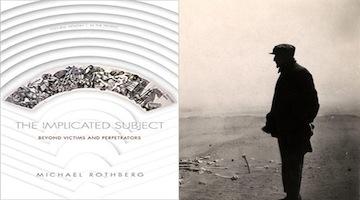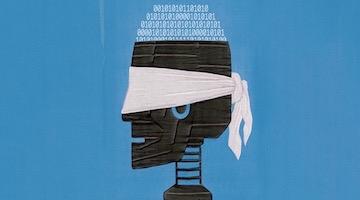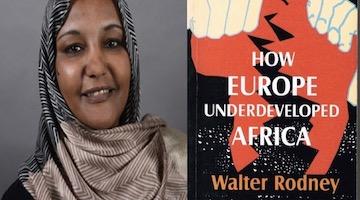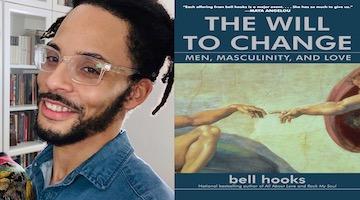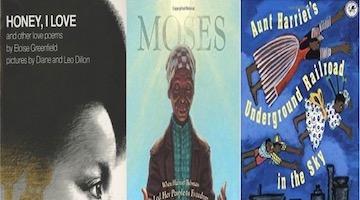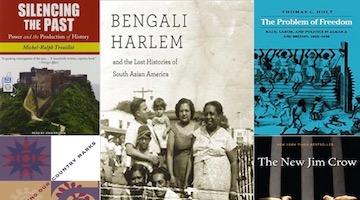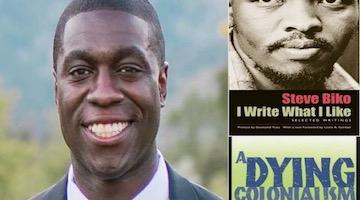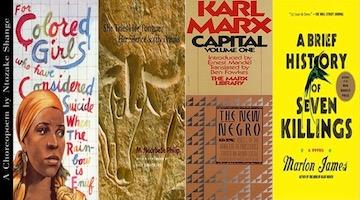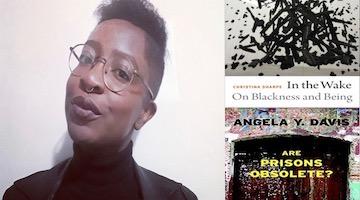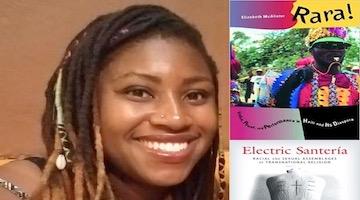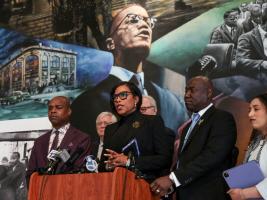An educator helps students navigate books that reveal Blackness as historicity, slavery as both obscured and ever-present, and the violence of race.
“Students should see race as a paradigm for subjection rather than a biological trait or solely a social identity.”
In this feature, we ask educators to list books they most enjoy teaching in their communities. Contributors include professors, graduate students, artists, journalists, organizers, activists, and other community leaders. Readers of the Black Agenda Report understand that the university classroom isn’t the only place where learning happens. Submissions therefore include lists of books that are taught at community workshops, mosques, churches, prisons, libraries, the local preschool, or even a weekly book study on one’s front porch. This week’s contributor is Ashlie Sandoval.
Claudia Rankine’s Citizen: An American Lyric (2014) is a book of poetry that expresses how anti-Black racism operates across overt acts of violence and interpersonal gestures, comments, and silences. In its multiple scenes, Citizen makes use of second-person narrative. Unlike traditional lyric poems that follow the feelings of a single individual subject, Citizen often uses a second-person narration that is sometimes Rankine, sometimes the reader, and sometimes an addressee. This alternating subject provokes the reader to think of how subjecthood is itself fractured and composed through intimate encounters and linguistic hails. I assign it the first week for undergraduate courses on race. Students come to class having written a short response on how the text reflects their current conversations on race or sparked new conversations for them. They discuss how racism operates across different scales, specifically what types of anti-Blackness are made visible and acknowledged, which types are visible but go unacknowledged, and which forms often go unseen, unacknowledged, and unaddressed. To move the discussion from individual acts of anti-Blackness toward thinking about institutionalized anti-Blackness, I pair Rankine’s piece with an excerpt from Stokely Carmichael’s address for the Congress on the Dialectics of Liberation (1967). This address contains comments on his refusal to talk about individual racism and his emphasis on the importance of institutionalized racism. I ask students to think through the relationship between intimate/overt individual racism and small- and large-scale institutional racism. These texts are used to help students apprehend and theorize the different operations and structures of anti-Blackness in a supposed post-racial era of color-blindness.
Paul C. Taylor’s Black is Beautiful: A Philosophy of Black Aesthetics (2016) is a philosophical inquiry into the “problem-spaces” and concepts that compose the Black aesthetic tradition (27). The project is oriented by the analytical philosophical tradition and centers culture media as its object of analysis. The book outlines how aesthetic practice constitutes processes of racialization and racial formation under white supremacy. Within Black aesthetics, the book addresses (in)visibility, criticism, authenticity, anti-Black contexts, somatics and music, interracial exchange, and, briefly, appropriation. In the classroom, I have students read the second chapter that discusses black (in)visibility. It gives students a grammar to identify and theorize Black erasure through concepts such as presence, personhood, perspectives, and plurality. I find Black is Beautiful important because it underscores how the organization of visual experience sets the framework for how subjects construct themselves and imagine their future possibilities. Oftentimes, aesthetic practices are positioned as ancillary to larger institutional forms of racism and racialization. I try to complicate this dichotomy by showing how the institutional and aesthetic meet not only to structure the logics of white supremacy and influence Black aesthetic practice but also to compose our life experiences as racialized subjects. The week I discuss Taylor’s work, I also have students read an excerpt from Anne A. Cheng’s Ornamentalism. Students trace how the aesthetics and visibility of Blackness relate and diverge from the racialization of what Cheng calls “yellow women.” Students see how these forms of racialization, while discrete, relate to one another.
Achille Mbembe’s Critique of Black Reason (2013) is an expansive genealogy of the concept of Blackness. In it, Mbembe traces historical points through colonialism, slavery, and capitalism, where Black reason emerged. As a term, Black reason describes a paradigm used to subject, govern, and produce modes of extraction as well as refers to “a psycho-oneiric complex” (10). In the book, Mbembe theorizes the African American archive of Blackness alongside the continental archive. Differing from absolute conceptualizations of Black ontology, Mbembe thinks of Blackness as a matter of historicity. He concludes the book by proposing a form of politics built on creating and clearing pathways of composition, as opposed to logics of action based on flight, fugitivity, or destruction. In my course, The Architecture of Race, students are given the second chapter, “The Well of Fantasies,” which theorizes how the notions of “Africa” and “Blackness” developed alongside one another. The book is important because, among other reasons, it destabilizes biological or static notions of race by showing how Black reason formed and why it developed and continues to evolve, namely for conquest, containment, and extraction. In order to parse through the arguments in Mbembe’s text, I print out lines from the assigned chapter on strips of paper and fold and put the strips in a bag that the students pass around. Each student picks a strip from the bag, unfolds it, reads it aloud, and says what they think the passage means and its significance to Mbembe’s larger argument and our class themes. After the student gives an initial response, the rest of the class adds their ideas and questions about the passage until we feel we have arrived at a thorough interpretation. This text helps students see race as a paradigm for subjection rather than a biological trait or solely a social identity.
Saidiya Hartman’s Scenes of Subjection (1997) maps the continuities between slavery and its aftermath, blending historical analysis with theoretical exegesis. The book is broken up into two parts. The first part examines supposed scenes of enjoyment and the second supposed scenes of freedom. Both parts reveal how enjoyment and freedom were discursively positioned to disguise, as well as to enact, the terror and violence that occurred under their names. Hartman’s history shows how the logics of slavery obscured and shaped the anti-Black discourses, ideological frameworks, and political structures of “freedom.” In a course on Blackness and performance, I have students read excerpts from Hartman’s chapter, “Fashioning Obligation,” which discusses how manuals for the freed attempted to use liberal notions of responsibility and indebtedness to fashion a new form of involuntary servitude in Black people through their gestures and behaviors. We read this alongside excerpts from Richard Schechner’s Performance Studies: An Introduction (2013). Schechner theorizes performance as twice-behaved behavior (e.g. gestures and actions) that can be abstracted from their original contexts and recombined. I ask students to think of the limits of abstraction. Can we abstract gestures from the bodies that perform them and the racialized contexts in which bodies dwell? To highlight this limit, I show them news photographs from the aftermath of Hurricane Katrina, without their published captions. The photographs portray Black and white families foraging for food. I ask students to identify similar gestures across the photographs. They identify people holding food above the water and swimming. Then I reveal the captions. The captions refer to the Black families as looters and the white families as residents despite their identical behaviors. I ask students how might the historical contexts of racialized societies impact how bodies are read.
Christina Sharpe, in In the Wake: On Blackness and Being (2016), describes wakes as “processes [through which] we think about the dead and about our relationship to them” (21). In the Wake is itself a performance of wake work, a book where Sharpe attends to Black life and Black suffering in the wake of the transatlantic slave trade. She does this through the figure of the slave ship, tracing how its semiotics, its mechanisms of containment, punishment, and captivity, continue on in the present in places such as prisons, camps, and schools. In my course, The Architecture of Race, I assign students to read the chapters “The Ship” and “The Hold.” Giving a lecturette that discusses the designs of slave ships and the use of slave ship artwork in abolitionist material, I ask students to think about how built objects can act as both racializing devices and metaphors that explicate the violent logics of race. After the lecturette, I have students make a conceptual map of how the slave ship acts as an organizing metaphor for Sharpe to theorize how slavery exists as an “unresolved unfolding,” as a singularity that continues into our present (14). Students are then asked to think of a built object that acts as a generative metaphor to explain their own racialized experience.
Ashlie A. Sandoval is a Princeton-Mellon Fellow in Architecture, Urbanism, and the Humanities at Princeton University. Her research examines how our interactions with the built environment influence how we interpret and respond to the evolving labor conditions within racial capitalism. Her current book manuscript, Designed to Work: Racial Capitalism, Surplus Labor, and Performance looks at how racial imagery shapes the design process in architectural projects meant to respond to unemployment, precarious employment, and low-income. Her work has been published in venues such as MELUS. She received her PhD in performance studies from Northwestern University.
COMMENTS?
Please join the conversation on Black Agenda Report's Facebook page at http://facebook.com/blackagendareport
Or, you can comment by emailing us at comments@blackagendareport.com

